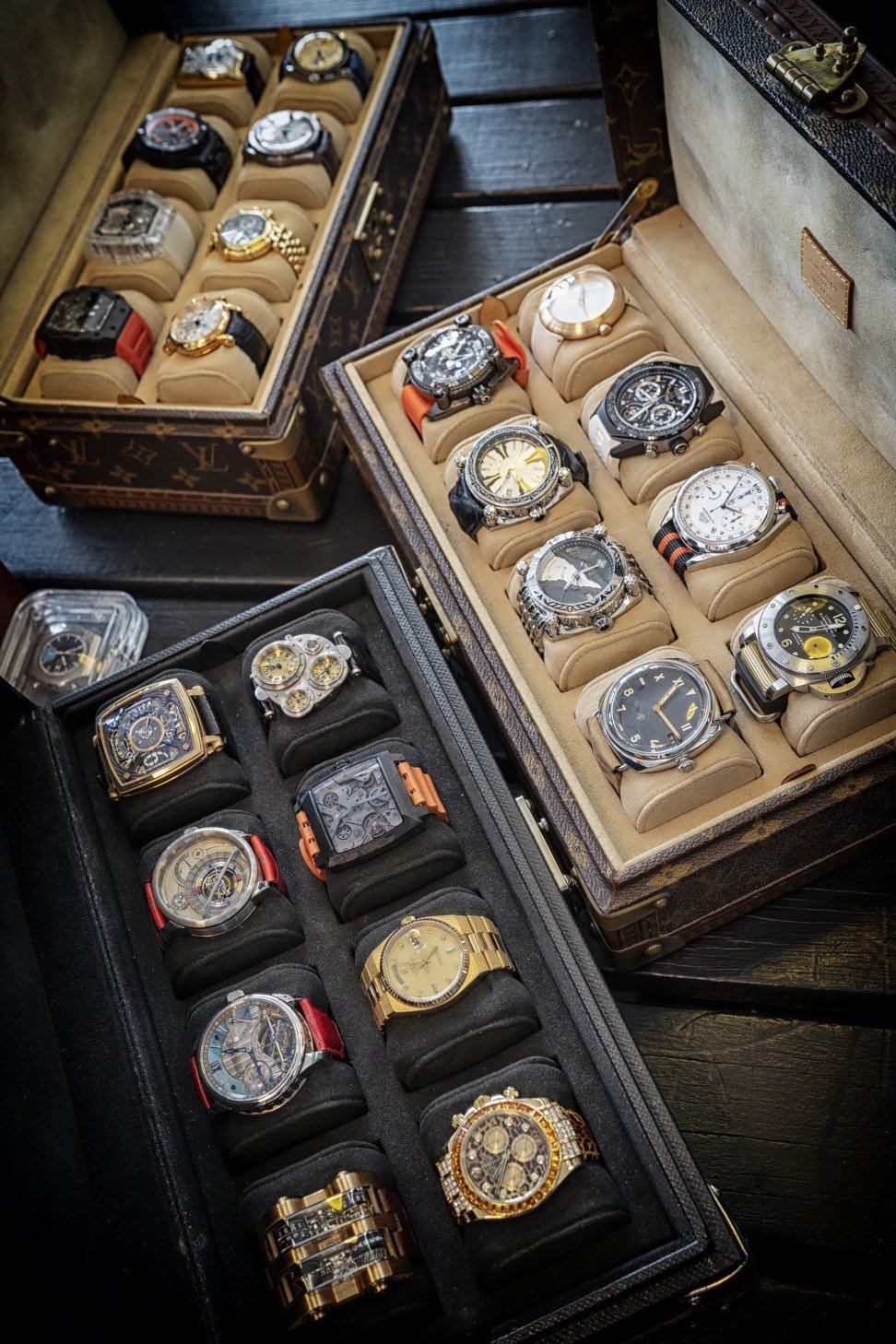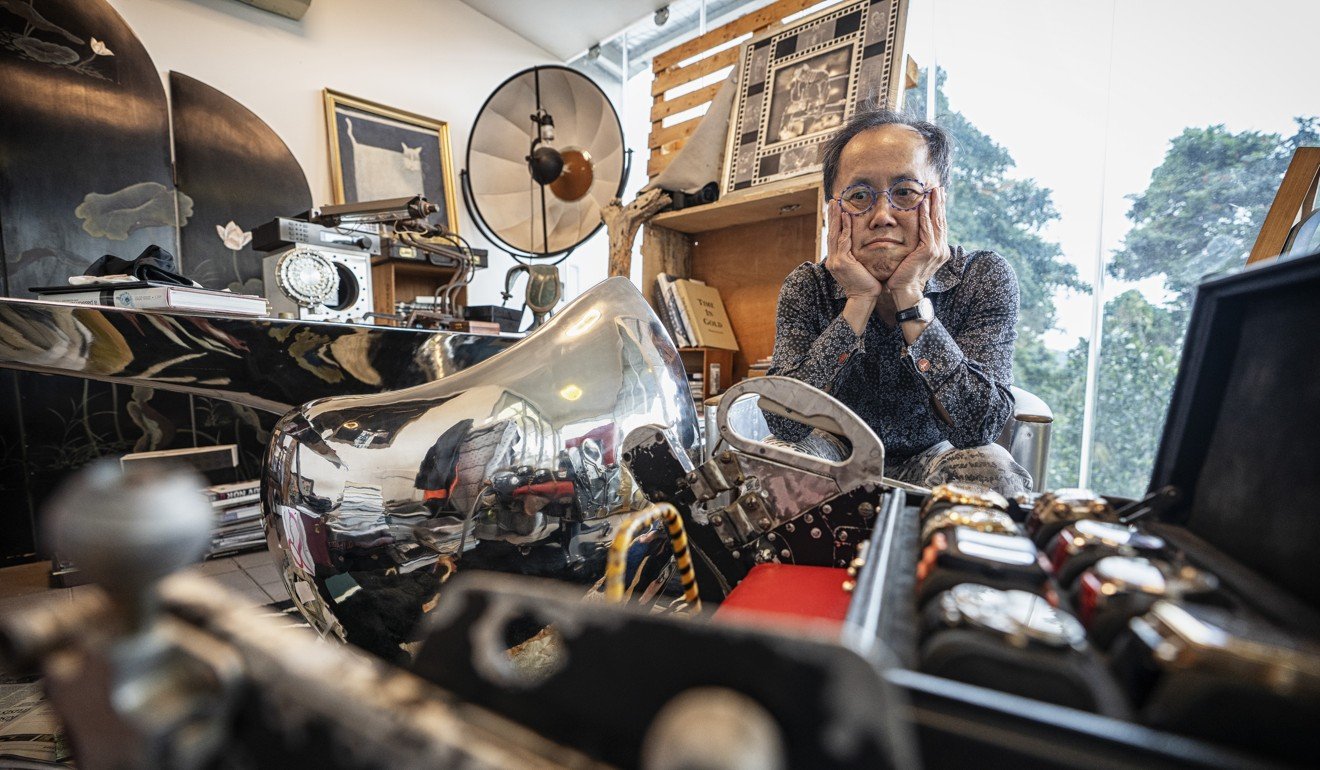
The future of watch fairs: why top marques no longer need Baselworld, SIHH, says major Asian collector
- Magpie collector Bernard Cheong sits at a Ron Arad desk with a Salvador Dali on it as he shows some of the most prized watches in his US$15 million collection
- Seeing fellow pupils at Singapore’s elite Anglo Chinese School wearing Omegas and Rolexes, he collected used Coca-Cola bottles to buy his first timepiece
Dr Bernard Cheong has what he calls a “migration box” – a travel case that holds up to eight timepieces. “I like to say that these are the watches I will take with me if I have to relocate,” says the jovial 61-year-old, one of the world’s most prolific watch collectors.
Known equally for his delightfully quirky personality that has made him a staple on Singapore’s social scene as for his watch collection, which he estimates to be worth US$15 to US$20 million, he naturally keeps some eye-popping mechanical wonders in this treasure chest.
Five niche designer watch brands made in Hong Kong that appeal to millennials
One of his most prized pieces is a S$3.3 million (US$2.4 million) Greubel Forsey Invention Piece 1, numbered 00 in an 11-piece series. Its serial number indicates that it is the watchmaker’s personal prototype. It would not even have been sold, if not for Cheong’s clout. He believes the watch can eventually command up to S$5 million.
Dressed in a printed Tom Ford shirt and Just Cavalli jeans, he pours a liberal dram of whiskey before settling in for a long chat about timepieces in his home office. A self-taught watch expert, he has spent much of his life shaking up the rarefied and staid watch industry.
In 2011, he made history when he became the first ambassador for the Geneva-based Fondation de la Haute Horlogerie who was not from the watch industry. He helped formulate the transparent jury system, and an audited and numbered voting system, for the Grand Prix d’Horlogerie de Genève in 2002, a high-end watchmaking contest, before introducing it to Asia.

His expertise is drawn from decades of experience of watch buying and selling and forging close relationships with watchmakers and retailers. This has also put him in the unique position of being an industry observer with unfiltered, and sometimes contrary, insights.
For instance, he does not mince words when talking about the recent issues surrounding the industry’s key watch fairs, Baselworld and SIHH. The two fairs recently announced they would be synchronising their calendars to run back to back, following a fall in the number of Baselworld exhibitors.
“It is a reality of the industry. The exhibitors don’t need to be there any more – why pay so much to exhibit like this?” he says. Cheong notes that watchmakers today can easily bypass industry fairs by offering information about their latest creations directly to consumers via the internet.

When Swiss watchmaking conglomerate Swatch Group pulled out of Baselworld, he was not surprised, even if the rest of the industry was; Cheong hints that the conglomerate, which owns brands including Omega, Breguet and Harry Winston, did not need to be at a fair to sell its watches.
“Swatch Group is there for the glamour. You cannot attract film stars with Seiko, but you can with Omega,” he says.
The eclectic collector is happiest when talking about his pet topic – innovative watchmakers who push the envelope. He takes out another series 00 watch, this one by Vianney Halter, and says: “Vianney made this watch with his bare hands to pass the watchmaking exams.”
Due to the physics of the watch, they don’t have wear and tear. I have watches from the 1880s to the 1900s that still work and are accurate
His four-storey home in western Singapore, where he and his wife, Dolly, have lived since 1989, is well loved and well lived in. It turns out that the good doctor, who is the chief executive officer and a partner of Lifeline Medical Group, collects more than just watches.
Framed works by Singaporean visual artist John Clang hang on his walls, there are various vintage barber’s chairs in his living room, and there are stacks of magazines featuring articles on him and his wife at various society events.
But it is his home office at the back of the ground floor, overlooking a modestly sized swimming pool, that contains the true treasures.
When he works or is inspecting his watches, he sits at a sculpted stainless steel table by British-Israeli designer Ron Arad. An original Salvador Dali sculpture, Melting Timepiece, sits on top of the desk. Surrounding him are a range of longboards that date back to his younger skater days; now he runs 5km daily to keep fit. A vintage ice shaver is located two paces away from the architectural model of his house, made when it was built 30 years ago.

Incredibly, there are also two museumworthy aviation relics – an ejector seat from a United States F4 Phantom military jet and a seat from a second world war British Spitfire. There is so much to take in, we end up laying out about 30 watches that he has brought out for this interview – including the Greubel Forsey – on the floor for closer inspection.
If it seems incongruous to have an array of precious timepieces scattered on the floor, he does not show it. “Watches are unlike other machines. Due to the physics of the watch, they don’t have wear and tear. I have watches from the 1880s to the 1900s that still work and are accurate,” he says.
His down-to-earth attitude is a big part of his charm and stems from his humble beginnings. His earliest memories of watches dates back to his youth when, as a teenager in Singapore’s elite Anglo Chinese School (ACS), he noticed how his peers wore Rolex and Omega watches. Cheong was born into a middle-class family – his father was a teacher at ACS.

“That was the reason I could get in,” he says.
To fit in, the enterprising teenager began collecting used Coca-Cola bottles for their deposits. He eventually saved enough to buy his own watch, a Seiko Chronograph. “I didn’t know at that time but I had by accident bought the world’s first automatic chronograph.”
Watch enthusiasts launch own brand in Malaysia, and it’s an instant hit
Other treasures that he has taken out of storage in a secure location for this interview include a 1982 Rolex Oyster Quartz, of which only 10 were made, and an MCT Sequential. The Rolex is worth about US$12,500 today, more than double what he paid, while the MCT is worth about US$45,000, down from its retail price of US$145,000 in 2012.
Cheong is unperturbed by the depreciation in value, which he thinks is only temporary. “You’ll have to hold this one for a while because nobody will want or be able to make something like this again. These are the watches that will elevate the industry and bring jobs to everybody else down the job stream. If you always have the same conventional watches, it will always be dry, like making a pencil.”
Protecting his beloved industry is something he takes seriously. In China, the recent crackdown on conspicuous consumption has led to a drop in sales and to brands like Richemont buying back unsold stock. “It is smart for the companies to buy back their precious pieces. When times are hard, people will sell watches at any price to put food on the table,” he says. This could lead to a massive undercutting in prices, he adds.

“They did the right thing to retain control of prices.”

